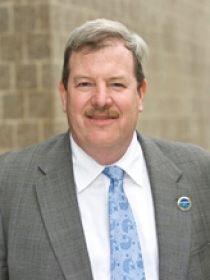Dr. Robert Traver Tapped by PA Senate for Stormwater Expertise
When Hurricane Irene and Tropical Storm Lee ravaged the eastern seaboard in late summer, they left behind substantial flooding – and ongoing threats to safety, property, and public health in communities across Pennsylvania. In November, the Pennsylvania Senate Environmental Resources and Energy Committee tapped Dr. Robert Traver, Professor of Civil and Environmental Engineering, along with a number of engineers, infrastructure experts, and government officials, to discuss flood mitigation and stormwater management during a two-day joint public hearing.
Dr. Traver, Director of both the Villanova Center for the Advancement of Sustainability in Engineering and the Villanova Urban Stormwater Partnership, advocated for green infrastructure design of and maintenance for stormwater control measures as a viable alternative to existing stormwater runoff solutions.
“I consider Pennsylvania’s current stormwater management regulations to be well thought out. The combination of volume control for smaller storms and peak flow rate reductions for the localized stream channels, paired with stream bank buffers, is well balanced,” he says. However, using examples from Villanova’s campus-based stormwater best management practice sites, Dr. Traver demonstrated how rain gardens, porous asphalt, bioswales and retention basins could further reduce watershed volume in a more cost effective way, all while working within a space’s existing landscape.
Conversely, Dr. Traver took issue with existing stormwater control measure inspection and maintenance regulations. As enforcement has never been effective, flooding in certain communities has increased, which ultimately damages local water resources. Communities that encourage or require homeowners and businesses to address stormwater control issues in “greener” creative ways, such as those used at Villanova, may not only enjoy a reduction in flooding potential but also overall improvements to the local watershed.
Otherwise, according to Dr. Traver, the only alternative strategy is to focus on flood control – which he cautions against unless oversight bodies apply a holistic approach and prioritize maintenance practices. “If an area has been flooded frequently, we should expect it to continue to flood. If this is not acceptable, then our choices are unfortunately limited to either major conveyance works such as levees, or land use decisions to include moving structures or raising first floor elevations,” says Dr. Traver. “The 100 year storm has a 1 percent chance of happening every year. When we design to that standard, the site is vulnerable to the 200 year storm. If levees become the solution, I urge the committee to look at the real cost to include maintenance, and to incorporate land use activities as part of the solution.”

